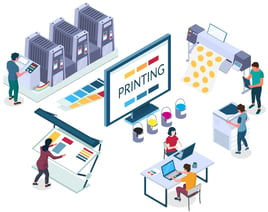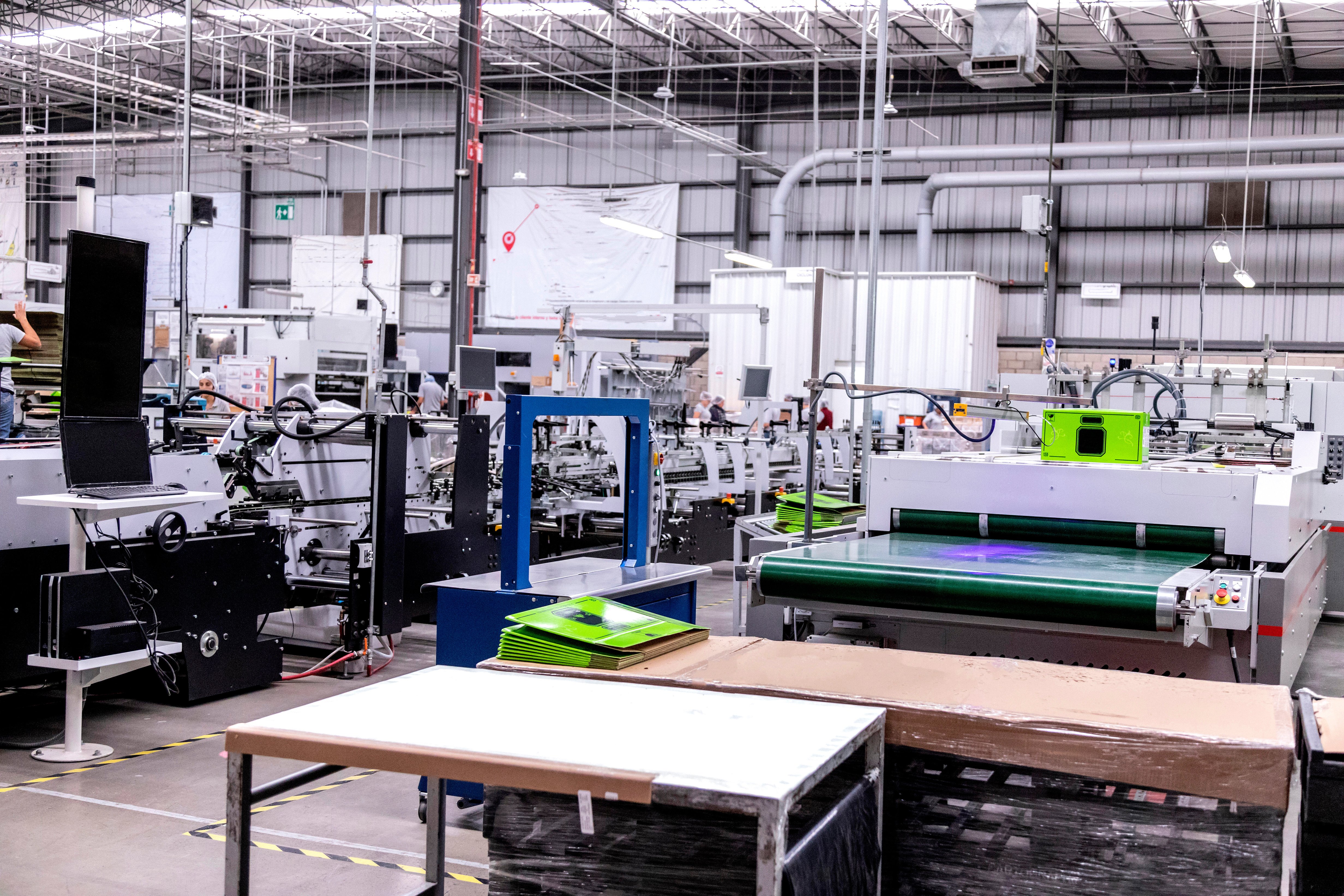Expanding into wide-format offerings is exciting on many fronts. It’s also challenging and complex as, among other things, it requires creating a smart manufacturing layout to produce the printed items profitably.
complex as, among other things, it requires creating a smart manufacturing layout to produce the printed items profitably.
A good floor plan is like a puzzle—all the pieces must fit together to achieve the most efficiency. This includes moving materials, accessing equipment, creating networks, and other elements. Properly done, an efficient floor plan will reduce waste, increase productivity, and boost competitiveness.
Overall, the goal is to achieve an optimal flow. Create the most direct and productive means of physically moving a job from intake to production, to finishing and then shipping. The challenge is accommodating multiple printers, cutters, laminators, mounting devices, and other equipment into the flow.
Product Layout or Process Layout?
Common approaches to designing a manufacturing facility are the product layout method, the process layout method, or a hybrid of the two.
If, for example, a wide format operation is dedicated to producing one product, say a super-long run for labels that is repeated regularly, all equipment can be arranged according to the product layout. The equipment is arranged in essentially a straight line.
This simple arrangement minimizes the distances for material handling, reduces throughput time, uses space efficiently, and eliminates bottlenecks.
If an operation is producing a variety of jobs that are non-repetitive, then the process approach is often the nimblest. In this layout, you group all machines that perform a similar function together at various locations. All printers go in one area, all finishing in another, for example. This may not be the most direct route, but it allows for production versatility.
In today’s world, manufacturing operations often deploy a combination layout. Basically, this approach is akin to setting up production lines that work in sync and start and end in the same place.

Production Floor Layout Best Practices
With all three layout approaches, we must keep certain considerations in mind:
- Ensure you leave enough room to move around any machine, and space to access it whether loading ink or doing repairs. What is the minimum number of feet of working space needed for each piece of equipment? You don’t want operators tripping over each other.
- Minimize the distances that materials, such as substrates, ink, and other supplies, must travel between equipment. That includes moving materials from storage to the production space, and the final product to shipping. Too much moving around creates waste and inefficiency.
- Certain substrates for wide format may be bigger than those used in commercial operations. Rolls can be up to 16 ft. and require specific handling.
- Also, consider how to handle and move finished products, especially if you must inventory and kit printed items before shipping.
 Assess power needs. How far are the outlets? What voltage does each piece of equipment require? How will you connect all the pieces on the floor? If cables are needed, how long should they be and will they impede movement?
Assess power needs. How far are the outlets? What voltage does each piece of equipment require? How will you connect all the pieces on the floor? If cables are needed, how long should they be and will they impede movement?- How will each piece of equipment connect to internal digital networks? Will each piece need an IP address?
- How will you handle other critical requirements like exhaust, air supply, temperature, waste, and humidity?
- Think about what printers or other devices must be stationary and what stations you can move.
Critically, automation and software are key to achieving an efficient shop floor flow and requires planning. An effective MIS system, for example, can consolidate litho and wide-format operations and reduce administrative costs.
A good floor plan is well thought out, and should account for growth and added capacity, but it need not be cast in stone. Like anything else, a continuous improvement mindset with regular evaluations and adjustments will save time, labor, and materials.
If you are thinking of installing wide format equipment or need a new floor production plan, Gimbel & Associates specializes in these type of assessments. We have helped many businesses improve workflow efficiency with redesigned production floor plans. For more information:


